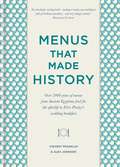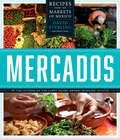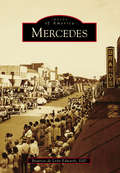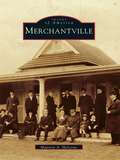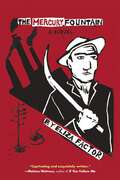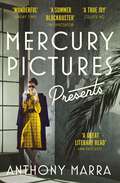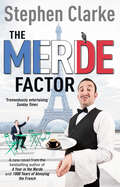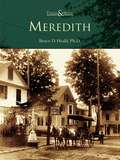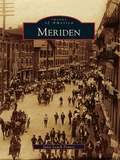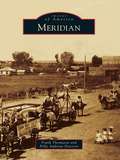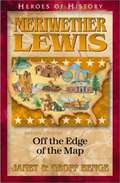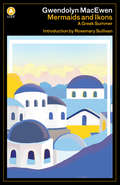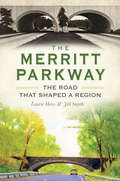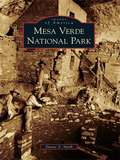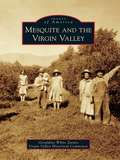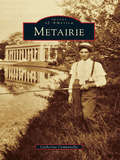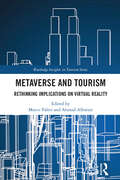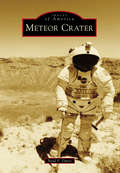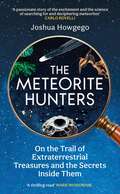- Table View
- List View
Menus that Made History: Over 2000 years of menus from Ancient Egyptian food for the afterlife to Elvis Presley's wedding breakfast
by Alex Johnson Vincent Franklin'An absolutely riveting book - reading it makes you intelligent, full of brilliant anecdotes - and very hungry indeed.' - Richard Curtis 'This brilliantly conceived and well-researched book is a source of real delight.' - Dr Annie Gray, BBC Radio 4's The Kitchen Cabinet 'Superbly written, a complete joy to read, and just about the perfect present for anyone even vaguely interested in food.' - Mark Diacono'A gastronomic delight. You can savour it a course at a time, or you may consume the whole banquet in one sitting. It's delicious either way - utterly scrumptious, in fact!' - Mike LeighThis fascinating miscellany of menus from around the world will educate as well as entertain, delighting both avid foodies and the general reader.Each menu provides an insight into its particular historical moment - from the typical food on offer in a nineteenth-century workhouse to the opulence of George IV's gargantuan coronation dinner. Some menus are linked with a specific and unforgettable event such as The Hindenburg's last flight menu or the variety of meals on offer for First, Second and Third Class passengers on board RMS Titanic, while others give an insight into sport, such as the 1963 FA Cup Final Dinner or transport and travel with the luxury lunch on board the Orient Express. Also included are literary occasions like Charles' Dickens 1868 dinner at Delmonicos in New York as well as the purely fictional and fantastical fare of Ratty's picnic in The Wind in the Willows.
Mercados: Recipes from the Markets of Mexico (The William & Bettye Nowlin Series in Art, History, and Culture of the Western Hemisphere)
by David Sterling Mario CanulIn this travelogue/cookbook, the James Beard Award-winning author of Yucatán takes you on a tour of Mexico&’s most colorful destinations—its markets. David Sterling&’s passion for Mexican food has attracted followers from around the globe. Just as Yucatán earned him praise for his &“meticulously researched knowledge&” (Saveur) and for producing &“a labor of love that well documents place, people and, yes, food&” (Booklist), Mercados now invites readers to learn about local ingredients, meet vendors and cooks, and taste dishes that reflect Mexico&’s distinctive regional cuisine. Serving up more than one hundred recipes, Mercados presents unique versions of Oaxaca&’s legendary moles and Michoacan&’s carnitas, as well as little-known specialties such as the charcuterie of Chiapas, the wild anise of Pátzcuaro, and the seafood soups of Veracruz. Sumptuous color photographs transport us to the enormous forty-acre, 10,000-merchant Central de Abastos in Oaxaca as well as tiny tianguises in Tabasco. Blending immersive research and passionate appreciation, David Sterling&’s final opus is at once a must-have cookbook and a literary feast for the gastronome. &“The 560 thick, glossy pages of [Mercados] are such a riot of color and photography, the first time I picked up the book, I didn&’t pause to read a word of it. It took a second pass through David Sterling&’s gorgeous travelogue to absorb that it is equally rich in information—not so much a cookbook as a treatise on the food and culture of Mexico as told through its vibrant markets.&” –Dallas Morning News &“Reflects a lifetime of traveling to markets throughout Mexico to document the diverse foodways of the country.&” –Austin360
Mercados: Recipes from the Markets of Mexico (The William & Bettye Nowlin Series in Art, History, and Culture of the Western Hemisphere)
by David Sterling Mario CanulIn this travelogue/cookbook, the James Beard Award-winning author of Yucatán takes you on a tour of Mexico&’s most colorful destinations—its markets. David Sterling&’s passion for Mexican food has attracted followers from around the globe. Just as Yucatán earned him praise for his &“meticulously researched knowledge&” (Saveur) and for producing &“a labor of love that well documents place, people and, yes, food&” (Booklist), Mercados now invites readers to learn about local ingredients, meet vendors and cooks, and taste dishes that reflect Mexico&’s distinctive regional cuisine. Serving up more than one hundred recipes, Mercados presents unique versions of Oaxaca&’s legendary moles and Michoacan&’s carnitas, as well as little-known specialties such as the charcuterie of Chiapas, the wild anise of Pátzcuaro, and the seafood soups of Veracruz. Sumptuous color photographs transport us to the enormous forty-acre, 10,000-merchant Central de Abastos in Oaxaca as well as tiny tianguises in Tabasco. Blending immersive research and passionate appreciation, David Sterling&’s final opus is at once a must-have cookbook and a literary feast for the gastronome. &“The 560 thick, glossy pages of [Mercados] are such a riot of color and photography, the first time I picked up the book, I didn&’t pause to read a word of it. It took a second pass through David Sterling&’s gorgeous travelogue to absorb that it is equally rich in information—not so much a cookbook as a treatise on the food and culture of Mexico as told through its vibrant markets.&” –Dallas Morning News &“Reflects a lifetime of traveling to markets throughout Mexico to document the diverse foodways of the country.&” –Austin360
Mercedes
by Beatrice de Edwards EdDMercedes is located in Hidalgo County in South Texas in a geographic area called the Lower Rio Grande Valley, which is really a river delta at the mouth of the Rio Grande River first inhabited by Coahuiltecans. Spanish colonists arrived in this area in 1749 to establish ranching communities. In 1905, the American Rio Grande Land and Irrigation Company purchased land in the Llano Grande Spanish land grant, built Mercedes as a showcase headquarters, constructed the largest irrigation system then known, and proceeded to develop the area through commercialized agriculture. Home of notable author Dr. Rolando Hinojosa-Smith, G.I. Forum founder Dr. Hector P. García, Olympic athlete Billy Gene Pemelton, US congressman Rubén Hinojosa, and the Rio Grande Valley Livestock Show, Mercedes continues to attract many visitors who seek the mild climate and warm hospitality of the town.
Mercer County
by William R. ArcherOriginating almost a quarter of a century prior to the Civil War, Mercer County, West Virginia was namedfor General Hugh Mercer, a Revolutionary War hero. The county has been a crossroads for many events, including the Civil War and the establishment of an industrial economy after the war ended. When two mighty railroads, the Norfolk & Western and The Virginian, began shipping coal and timber to the once-agrarian area, Mercer County blossomed into one of the five most highly populated counties of theMountain State. In 1671, colonial explorer Robert Fallam described what would become Mercer County in his journal as "a pleasing tho' dreadful sight to see the mountains and hills as if piled one upon another." Despite extreme challenges, residents ofMercer County developed a spirit of pride, independence, strength, and genuine fellowship that today makes the region a warm and friendly place to call home. As legend holds, even the notorious outlaw Frank James was so overwhelmed by the hospitality he received in Mercer County in 1882 thathe decided to pass on robbing the Bank of Princeton and, instead, robbed a bank in a neighboring county.
Merchantville (Images of America)
by Maureen A. MclooneOne hundred feet above the Delaware River is Merchantville, a spirited community founded in 1874. Many wealthy Philadelphia merchants established residences while others summered in this key South Jersey center for goods and services. In 1926, the building of the Benjamin Franklin Bridge opened the door to a new era of expansion, which continues today, as Merchantville forges ahead on its prosperous path. A sign of Merchantville's past and a crowning jewel of today is the wonderful Victorian architecture seen throughout town. Many historical homes still stand, lovingly restored and maintained by enthusiastic, caring residents. Merchantville includes a look at these great homes, as well as a chronicle of the town's greatest asset, its people. Boxing champion Jersey Joe Walcott, born in 1914 in Merchantville, trained right in the center of town; Jane Eayre Fryer wrote the Mary Frances series for young girls (1911-1918); and Wallis Warfield Simpson, later the Duchess of Windsor, visited Merchantville c. 1900. But everyday life and everyday residents are what make any study of history vital, and they are what make Merchantville so outstanding.
The Mercury Fountain: A Novel
by Eliza Factor"Eliza Factor’s first novel, The Mercury Fountain, explores what happens when a life driven by ideology confronts implacable truths of science and human nature. It also shows how leaders can inflict damage by neglecting the real needs of real people. Though the action takes place between 1900 and 1923, the resonance feel alarmingly contemporary. . . Factor counters convention with a sharp sense of character, evocative subplots and the dangerous allure of mercury itself."--New York Times Book Review"Factor develops her characters in entertaining ways while building a novel of social realism."--Kirkus ReviewsSet in a remote stretch of desert near the border of west Texas and Mexico at the turn of the twentieth century, this story follows the pursuits of Owen Scraperton as he struggles to establish Pristina, a utopian community based on mercury mining that aims to resolve the great questions of labor and race. As age, love, and experience cause Owen to modify his original vision, his fiercely idealistic daughter Victoria remains true to Pristina's founding principles-setting them up for a major conflict that captures the imagination of the entire town. The Mercury Fountain combines realistic modern writing with elements from American and Greco-Roman mythology, taking its cue from Mercury, the most slippery and mischievous of gods, who rules over science, commerce, eloquence, and thievery.Eliza Factor was born in 1968 in Boston, Massachusetts, and currently resides in Brooklyn, New York. The Mercury Fountain is her debut novel.
Mercury Pictures Presents
by Anthony MarraThe epic tale of a brilliant woman who must reinvent herself to survive, moving from Mussolini's Italy to 1940s Los Angeles-a timeless story of love, deceit, and sacrifice from the award-winning, New York Times bestselling author of A Constellation of Vital PhenomenaLike many before her, Maria Lagana has come to Hollywood to outrun her past. Born in Rome, where every Sunday her father took her to the cinema instead of church, Maria immigrates with her mother to Los Angeles after a childhood transgression leads to her father's arrest.Fifteen years later, on the eve of America's entry into World War II, Maria is an associate producer at Mercury Pictures, trying to keep her personal and professional lives from falling apart. Her mother won't speak to her. Her boss, a man of many toupees, has been summoned to Washington by congressional investigators. Her boyfriend, a virtuoso Chinese American actor, can't escape the studio's narrow typecasting. And the studio itself, Maria's only home in exile, teeters on the verge of bankruptcy.Over the coming months, as the bright lights go dark across Los Angeles, Mercury Pictures becomes a nexus of European émigrés: modernist poets trying their luck as B-movie screenwriters, once-celebrated architects becoming scale-model miniaturists, and refugee actors finding work playing the very villains they fled. While the world descends into war, Maria rises through a maze of conflicting politics, divided loyalties, and jockeying ambitions. But when the arrival of a stranger from her father's past threatens Maria's carefully constructed facade, she must finally confront her father's fate-and her own.Written with intelligence, wit, and an exhilarating sense of possibility, Mercury Pictures Presents spans many moods and tones, from the heartbreaking to the ecstatic. It is a love letter to life's bit players, a panorama of an era that casts a long shadow over our own, and a tour de force by a novelist whose work The Washington Post calls 'a flash in the heavens that makes you look up and believe in miracles.'
Mercury Pictures Presents
by Anthony MarraThe epic tale of a brilliant woman who must reinvent herself to survive, moving from Mussolini's Italy to 1940s Los Angeles-a timeless story of love, deceit, and sacrifice from the award-winning, New York Times bestselling author of A Constellation of Vital PhenomenaLike many before her, Maria Lagana has come to Hollywood to outrun her past. Born in Rome, where every Sunday her father took her to the cinema instead of church, Maria immigrates with her mother to Los Angeles after a childhood transgression leads to her father's arrest.Fifteen years later, on the eve of America's entry into World War II, Maria is an associate producer at Mercury Pictures, trying to keep her personal and professional lives from falling apart. Her mother won't speak to her. Her boss, a man of many toupees, has been summoned to Washington by congressional investigators. Her boyfriend, a virtuoso Chinese American actor, can't escape the studio's narrow typecasting. And the studio itself, Maria's only home in exile, teeters on the verge of bankruptcy.Over the coming months, as the bright lights go dark across Los Angeles, Mercury Pictures becomes a nexus of European émigrés: modernist poets trying their luck as B-movie screenwriters, once-celebrated architects becoming scale-model miniaturists, and refugee actors finding work playing the very villains they fled. While the world descends into war, Maria rises through a maze of conflicting politics, divided loyalties, and jockeying ambitions. But when the arrival of a stranger from her father's past threatens Maria's carefully constructed facade, she must finally confront her father's fate-and her own.Written with intelligence, wit, and an exhilarating sense of possibility, Mercury Pictures Presents spans many moods and tones, from the heartbreaking to the ecstatic. It is a love letter to life's bit players, a panorama of an era that casts a long shadow over our own, and a tour de force by a novelist whose work The Washington Post calls 'a flash in the heavens that makes you look up and believe in miracles.'(P) 2022 Penguin Audio
The Merde Factor: How to survive in a Parisian Attic
by Stephen ClarkeEnglishman Paul West is living the Parisian dream, and doing his best not to annoy the French. But recently things have been going très wrong:He's stuck in an apartment so small that he has to cut his baguettes in two to fit them in the kitchen. His research into authentic French cuisine is about to cause a national strike - and it could be all his fault. His Parisian business partner is determined to close their tea-room. And thinks that sexually harrassing his female employees is a basic human right.And Paul's gorgeous ex-girlfriend seems to be stalking him.Threatened with eviction, unemployment and bankrupcy, Paul realises that his personal merde factor is about to hit the fan...
Meredith
by Bruce D. HealdThe history of Meredith as a corporate town dates back more than two hundred thirty years. Like most older towns, especially those devoted largely to agriculture, Meredith has greatly diminished in territory since its original incorporation; unlike most New Hampshire towns of this size, however, it is progressive and prosperous, and the valuation of the town has steadily increased. This growth is the result of Meredith's change from an agricultural town to an industrial town to today's prosperous four-season resort in the heart of the Lakes Region, at the foothills of the White Mountains. Meredith, part of the Then & Now series, places vintage images alongside contemporary photographs, taken by photographer Aaron Ober, to show the changes that have taken place in this area through the years.
Meriden
by Janis Leach FrancoIncorporated in 1806, Meriden was once proposed as the state capital. Although the plan was not implemented, the rural village quickly burgeoned into a major manufacturing center with the advent of the industrial revolution. Meriden advanced to become renowned as the "Silver City." International Silver Company and other key businesses, such as Parker Gun, Manning Bowman, Wilcox and White, and Handel Lamp, made Meriden a familiar name. Home to Gov. Abiram Chamberlain, Arctic explorer Hugh Johnson Lee, opera diva Rosa Ponselle, and baseball's Connie Mack, the city has also long been enlivened by a diverse mixture of immigrants and newcomers. Bordered on the north by dramatic traprock ridges, Meriden has a larger percentage of parklands than any other town in Connecticut, with Hubbard Park its crowning jewel.
Meridian
by Frank Thomason Polly Ambrose PetersonEight miles west of Idaho's capital city, Boise, the first settlers in what became Meridian found only arid land, sagebrush, and jackrabbits. The lone tree in the area was another 8 miles west in what became Nampa. Originally called Hunter, after a railroad superintendent, Meridian was initially a railway postal drop where workers tossed and hooked mailbags as the train passed through before the arrival of passenger service. By 1893, residents called the village Meridian, after the north-south prime meridian running through Meridian Road. In 1903, the village incorporated but still had a population of only a few hundred with grocery and harness shops and more churches than saloons. Village merchants and residents experienced orchard and dairy/creamery eras that ended in, respectively, the 1940s and 1970. Meridian became a city in the 1940s but 50 years later had a population of only 10,000. That number quadrupled over the next decade and today has nearly doubled again to around 80,000, as Meridian has evolved into the transportation and commercial hub of the Treasure Valley, especially in electronics and health care.
Meridian Hill: A History (Landmarks)
by Stephen R. McKevittIn the nineteenth century, Commodore David Porter built his mansion on a prominent hill sitting directly north of the White House, and the rest of Meridian Hill's history is indelibly tied to the fabric of Washington. John Quincy Adams once resided in Porter's mansion. Union troops used the estate and its lands during the Civil War. Later, part of the old estate was famously developed by Mary Henderson into a noted group of embassy mansions, and the extraordinary Meridian Hill Park was created. The rest of the land became a diverse, thriving residential neighborhood. Join local author Stephen McKevitt as he chronicles the fascinating story of this interesting urban locale in the nation's capital.
Meriwether Lewis: Off the Edge of the Map (Heroes of History)
by Janet Hazel Benge Geoffrey Francis BengeA biography of the co-leader of the 1804-1806 Lewis and Clark expedition into the unmapped American West, including his early life and the formation of the Corps of Discovery.
Mermaids and Ikons: A Greek Summer
by Gwendolyn MacEwenAward-winning poet and novelist Gwendolyn MacEwen explores her strongly personal responses to the landscape, culture, and people of Greece in this exquisitely written travel diary, which was originally published in 1978.Originally published in 1978, beloved poet and novelist Gwendolyn MacEwen’s first work of nonfiction explores her strongly personal responses to a complex civilization. Partly written during a trip to Greece in 1971, MacEwen moves from the urban tumult of Athens to the radiant simplicity of an island in the Aegean. In this intimate and exquisitely written travel diary, she evokes the very spirit of Greece — the exuberance of the people, the sun-drenched landscape, and the shaping power of ancient traditions and myths in modern Mediterranean life.
Merritt Parkway, The: The Road that Shaped a Region (Transportation)
by Laurie Heiss Jill SmythDecorated with a breathtaking landscape and a treasured collection of diversely styled bridges, the Merritt Parkway runs thirty-seven and a half miles through Fairfield County. From its complicated beginnings to the present, authors Laurie Heiss and Jill Smyth navigate the hard-fought yet picturesque path of this beloved road. Meet the bridge artist, the landscapers, the politicians and the activists whose involvement in the Merritt transformed Fairfield County from farms and country estates to one of the wealthiest counties in the nation. With the dedication of preservationists and conservationists, the Merritt Parkway today remains both functional and beautiful, holding a unique place in the heart of Connecticut's drivers.
Mesa Verde National Park
by Duane A. SmithMesa Verde National Park was America's first cultural park and also the world's first cultural heritage park. Created in 1906, it preserves the sites and materials of the prehistoric Puebloan people. Located in southwestern Colorado near the famous Four Corners, where the states of Colorado, Utah, Arizona, and New Mexico meet, the magnificent Mesa Verde is situated in Montezuma County, just south of Cortez and directly west of Durango. The park's rich archaeological history was played out amid some of the most ruggedly beautiful landscapes in the West. The greater story of the evolution of the park encompasses the Ute people, Theodore Roosevelt, novelist Willa Cather, and other personalities. These remarkable vintage photographs tell that saga, which is as fascinating as that of the Puebloans.
Mesquite and the Virgin Valley
by Virgin Valley Historical Committee Geraldine White ZarateThe lower Virgin River basin is located about 10 miles south of the border junction between what is now Nevada, Arizona, and Utah. Early explorers told of blistering heat, disease-carrying insects, and scarce, evil-tasting water. But in 1877, the valley offered a haven to a small group of Mormon families who sought to live and practice their religious convictions, settling in Bunkerville on the south side of the Virgin River. On the north side, the struggle to establish Mesquite started in 1880. The third attempt in 1894 was successful after years of merciless floods. Residents have survived a hostile environment, geographic isolation, political gerrymandering, and in the middle of the last century, dangerous radiation fallout from atomic testing. Deep sand roads have given way to a bustling interstate highway, and the area has become a golf and gaming destination. After incorporation in 1984, Mesquite experienced a boom and has been named the fastest growing city of its size in the United States.
Messi: The must-read biography of the World Cup champion, now fully updated (Guillem Balague's Books)
by Guillem Balague'I have seen the player who will inherit my place in Argentine football and his name is Messi' Diego MaradonaFULLY UPDATED TO INCLUDE THE 2022 WORLD CUP TRIUMPH & MESSI'S TRANSFER TO INTER MIAMI As Lionel Messi raised the World Cup triumphantly into the air, the world watched on in awe. Messi's final peak conquered; his final dream achieved. It was the fairy tale ending to a glittering career. Yet despite delivering Argentina their third World Cup, Messi's time at Paris Saint-Germain came to a dramatic conclusion, and Miami awaited the Argentinian legend. Guillem Balagué has had unprecedented access to Messi's inner circle including the player himself: his coaches, team-mates and family. From tracing the origins of Messi's precocious talent in Rosario, Argentina, to chronicling his peerless seventeen-season career at Barcelona, and his tumultuous Parisian adventure, Guillem takes us behind-the-scenes of Messi's World Cup triumph and his long-desired move to the MLS. This is an epic, authoritative and compelling account of an enigmatic footballing genius. 'I can tell my grandkids one day that I coached Lionel Messi' Pep Guardiola
Messi: The must-read biography of the World Cup champion, now fully updated (Guillem Balague's Books)
by Guillem Balague'I have seen the player who will inherit my place in Argentine football and his name is Messi' Diego MaradonaFULLY UPDATED TO INCLUDE THE 2022 WORLD CUP TRIUMPH & MESSI'S TRANSFER TO INTER MIAMI As Lionel Messi raised the World Cup triumphantly into the air, the world watched on in awe. Messi's final peak conquered; his final dream achieved. It was the fairy tale ending to a glittering career. Yet despite delivering Argentina their third World Cup, Messi's time at Paris Saint-Germain came to a dramatic conclusion, and Miami awaited the Argentinian legend. Guillem Balagué has had unprecedented access to Messi's inner circle including the player himself: his coaches, team-mates and family. From tracing the origins of Messi's precocious talent in Rosario, Argentina, to chronicling his peerless seventeen-season career at Barcelona, and his tumultuous Parisian adventure, Guillem takes us behind-the-scenes of Messi's World Cup triumph and his long-desired move to the MLS. This is an epic, authoritative and compelling account of an enigmatic footballing genius. 'I can tell my grandkids one day that I coached Lionel Messi' Pep Guardiola
Metairie (Images of America)
by Catherine CampanellaMetairie was the first suburb of New Orleans; an outgrowth to the west by young families seeking larger lots, open air, and affordable new housing. Those suburbanites shared much in common with previous generations of New Orleanians who had migrated westward from the original town (now the French Quarter) to high land along the Mississippi River and the Metairie Ridge. When Jefferson Parish was established in 1825, it included all New Orleans faubourgs west of Felicity Street--what we now know as Uptown New Orleans. These would become the first cities in Jefferson Parish: Carrolton, Jefferson, and Lafayette. By the early 1900s, the westward expansion continued into what we now call Old Metairie and Bucktown. During the mid-20th century, Metairie boomed and is now one of the largest communities in Louisiana. While many residents consider themselves New Orleanians, even those born generations after their families moved to the suburb, Metairie has its own unique history.
Metaverse and Tourism: Rethinking Implications on Virtual Reality (Routledge Insights in Tourism Series)
by Marco Valeri Ahmad AlbattatThis innovative and timely book presents an in-depth analysis of how the metaverse revolutionizes tourism management, transforms consumer behaviour and motivates tourists to visit destinations.Adorned with illustrative tables, figures and diagrams throughout, the volume is data-led and explores how metaverse experiences affect tourist satisfaction and loyalty toward metaverse tourism. It also takes a future-focused approach and looks at and how the technologies of metaverse tourism will lead to a new level of immersive virtual reality. The book considers the metaverse in relation to the United Nations Sustainable Development Goals, post-COVID-19 society and offers practical insights on the topic.This book will be of pivotal interest for students, scholars and academics in the fields of tourism planning and policy, tourism economics, tourism behaviour and tourism development, as well as those with an interest in these areas more generally.
Meteor Crater (Images of America)
by Neal F. DavisThere have been numerous books and periodicals written about Meteor Crater, the meteorites, and the crater's scientific value, but this book, with supporting images, is more about people. The story covers some history of the crater's founding and the many people who have been, and presently are, associated with the custody and maintenance of the site, preserving it for future scientific study and generations of visitors. These people include geologists, astrophysicists, astronauts, generations of families named Barringer and Tremaine, and local ranchers named Chilson-Prosser. All have, and continue to, influence and shape what the site has become, each adding their signature to the famous landmark. Today, these families, supported by Meteor Crater Enterprises management and staff of dedicated people, continue the legacy of sharing the history and science with 250,000 annual visitors from around the globe while they continue to focus on preserving the scientific integrity of the crater for future generations.
The Meteorite Hunters: On the Trail of Extraterrestrial Treasures and the Secrets Inside Them
by Joshua HowgegoWant to join the ultimate cosmic treasure hunt? 'They fall from the sky, and tell us about the universe: a passionate story of the excitement and the science of searching for and deciphering meteorites.' Carlo Rovelli Meteors, with their ethereal, glowing trails slashing through the atmosphere, have entranced us for centuries. But these extraterrestrial visitors are also inestimably valuable. Not just for collectors, who can make their fortunes tracking them down, but for scientists too. Meteorites are the most ancient objects we know, unblemished time capsules from the birth of the solar system. Following in the footsteps of passionate hobbyists, ground-breaking scientists and intrepid adventurers, Joshua Howgego takes a rollicking ride through the world of meteorite hunting. Join the seasoned practitioners braving the elements as they scour the Sahara and ice sheets of Antarctica. Discover how, closer to home, one unlikely hero – a self-taught jazz guitarist – is uncovering the countless micrometeorites scattered across the rooftops of our cities. And meet the professor searching for the rarest of the rare: fossil meteorites, entombed in rock since the days of the dinosaurs. Finding these stones from space is just the beginning. As scientists tease out their secrets, they piece together an unexpected new history of the solar system, with implications that extend to one of the most fundamental questions we can ask: how did life on earth begin?
